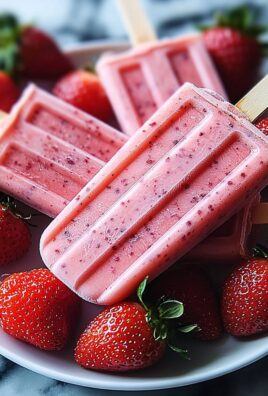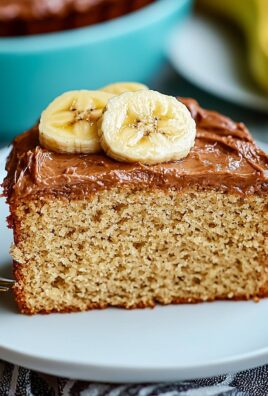Lemon Cheesecake Cookies are an absolute dream for anyone with a sweet tooth and a love for bright, zesty flavors. Imagine biting into a cookie that offers the creamy, tangy richness of cheesecake, but in a perfectly portable and delightfully chewy cookie form. It’s the best of both worlds, condensed into one irresistible treat! We absolutely adore these cookies because they manage to be both sophisticated and wonderfully comforting, evoking sunshine with every bite. What truly makes these Lemon Cheesecake Cookies so special is the incredible balance – the sharp citrus cuts through the sweetness of the cookie dough, while the cream cheese element ensures a tender, melt-in-your-mouth texture that you just can’t get from a regular cookie. Forget fussy dessert preparations; these cookies deliver all the decadent flavor with a fraction of the effort, making them a surefire hit for any occasion, from casual afternoon snacks to elegant gatherings.
Ingredients:
- 6 oz cream cheese, cold (170g)
- 3 tablespoons granulated sugar (38g)
- ½ tablespoon lemon zest (5g)
- ½ cup granulated sugar (100g)
- ½ tablespoon lemon zest (5g)
- 1¾ cups all-purpose flour, spooned and leveled (218g)
- ½ teaspoon baking powder
- ½ teaspoon baking soda
- ½ teaspoon salt
- ¾ cup unsalted butter, softened (168g)
- ¾ cup light brown sugar, packed (165g)
- ¼ cup granulated sugar (50g)
- 2 egg yolks, room temperature
- 1 teaspoon vanilla
- 2½ tablespoons lemon zest (25g)
Cheesecake Filling Preparation
Step 1: Creating the Luscious Cream Cheese Base
Begin by preparing the creamy cheesecake filling that will give these Lemon Cheesecake Cookies their signature tang and richness. In a medium bowl, combine the 6 ounces of cold cream cheese, 3 tablespoons of granulated sugar, and ½ tablespoon of lemon zest. It’s crucial that the cream cheese is cold at this stage. This helps it maintain its structure and prevents the filling from becoming too runny. Use a sturdy spoon or a rubber spatula to thoroughly beat these ingredients together until the mixture is smooth and free of any lumps. You want a perfectly uniform paste. Once smooth, set this bowl aside. This filling will be dolloped onto the cookie dough later.
Cookie Dough Assembly
Step 2: Creaming the Butter and Sugars for Optimal Texture
Now, let’s move on to the cookie dough itself. In a large mixing bowl, cream together the ¾ cup of softened unsalted butter, ¾ cup of packed light brown sugar, and ¼ cup of granulated sugar. Softened butter is key here; it should yield to gentle pressure but not be melted or greasy. If your butter is too cold, microwave it in 10-second intervals until it reaches the right consistency. Creaming these ingredients until they are light and fluffy is essential for creating cookies with a tender crumb and a pleasant chew. This process incorporates air, which contributes to the cookie’s rise and texture. This usually takes about 2-3 minutes of vigorous mixing with an electric mixer, or a bit longer by hand.
Step 3: Incorporating Wet Ingredients and the First Zest Infusion
Next, it’s time to add the wet ingredients to your creamed butter and sugar mixture. Add the 2 room-temperature egg yolks, one at a time, beating well after each addition until fully incorporated. Room-temperature eggs emulsify better with the fat, leading to a smoother dough. Then, stir in the 1 teaspoon of vanilla extract. Vanilla enhances the overall flavor profile of the cookies, complementing the bright lemon notes. Finally, add the ½ cup of granulated sugar along with the ½ tablespoon of lemon zest. This initial addition of lemon zest within the dough provides a foundational citrus flavor that will permeate every bite. Mix until everything is just combined. Don’t overmix at this stage; we want to avoid developing the gluten in the flour too much.
Step 4: Combining Dry Ingredients and Gently Folding Them In
In a separate, smaller bowl, whisk together the 1¾ cups of all-purpose flour, ½ teaspoon of baking powder, ½ teaspoon of baking soda, and ½ teaspoon of salt. Whisking the dry ingredients ensures that the leavening agents and salt are evenly distributed throughout the flour, which is crucial for consistent cookie rise and flavor. Gradually add this dry mixture to the wet ingredients in the large bowl. Mix on low speed or stir with a spatula until just combined. It’s very important not to overmix the flour. Overmixing can lead to tough cookies. Stop mixing as soon as you no longer see streaks of dry flour.
Assembling and Baking the Lemon Cheesecake Cookies
Step 5: Shaping and Adding the Cheesecake Filling
Now for the exciting part – assembling the Lemon Cheesecake Cookies! For each cookie, scoop about 2 tablespoons of the cookie dough and roll it into a ball. Place these dough balls onto a baking sheet lined with parchment paper, leaving about 2 inches of space between each one to allow for spreading. Using the back of a small spoon or your thumb, create a small indentation or well in the center of each dough ball. This well is where our prepared cream cheese filling will go. Carefully spoon about 1 teaspoon of the cream cheese mixture into each indentation. Then, sprinkle the remaining 2½ tablespoons of fresh lemon zest over the top of the cream cheese filling and the edges of the cookie dough. This final burst of zest adds a wonderful aroma and a vibrant, fresh lemon punch that truly elevates these cookies.
Step 6: Baking to Golden Perfection
Preheat your oven to 375°F (190°C). Bake the cookies for 12-15 minutes, or until the edges are lightly golden brown and the centers are set but still slightly soft. The cream cheese filling should look slightly puffed. Keep a close eye on them, as oven temperatures can vary. Overbaking will result in dry cookies, so it’s better to err on the side of slightly underbaked. Once baked, remove the baking sheet from the oven and let the cookies cool on the sheet for 5 minutes before carefully transferring them to a wire rack to cool completely. This cooling period on the baking sheet allows them to firm up further without becoming brittle. Enjoy these delightful Lemon Cheesecake Cookies warm or at room temperature.

Conclusion:
And there you have it – a delightful recipe for Lemon Cheesecake Cookies that are sure to impress! We’ve walked through each step, from creaming the butter and sugar to achieving that perfect tender crumb and tangy lemon zing. These cookies strike a beautiful balance between the richness of cheesecake and the satisfying chewiness of a cookie, making them a unique and addictive treat.
These Lemon Cheesecake Cookies are wonderfully versatile. Serve them at your next brunch, as a refreshing dessert after a hearty meal, or simply as an afternoon pick-me-up with a cup of tea. They pair beautifully with fresh berries, a dollop of whipped cream, or even a light dusting of powdered sugar.
Don’t be afraid to experiment! For a hint of citrus zest beyond the lemon, consider adding a touch of lime or orange zest. You can also fold in a handful of white chocolate chips for extra sweetness and texture, or even a swirl of raspberry jam for a pop of color and complementary flavor. The possibilities are endless!
I truly hope you enjoy making and devouring these delicious Lemon Cheesecake Cookies. They are a testament to how simple ingredients can transform into something truly special. So, gather your ingredients, put on your favorite apron, and get baking!
Frequently Asked Questions:
How do I store Lemon Cheesecake Cookies?
Store your cooled Lemon Cheesecake Cookies in an airtight container at room temperature for up to 3-4 days. For longer storage, you can also freeze them in a single layer on a baking sheet until firm, then transfer them to a freezer-safe bag or container for up to 3 months. Thaw at room temperature.
Can I make these cookies dairy-free?
Adapting these Lemon Cheesecake Cookies to be dairy-free will require some substitutions. You can use vegan cream cheese and dairy-free butter. Ensure your sour cream substitute also has a good tang. The texture might vary slightly, but the lemon flavor should still shine through.

Lemon Cheesecake Cookies-Easy Flavorful Treat
An easy and flavorful cookie recipe featuring a creamy cheesecake filling and a bright lemon flavor.
Ingredients
-
6 oz cream cheese, cold
-
3 tablespoons granulated sugar
-
½ tablespoon lemon zest
-
½ cup granulated sugar
-
½ tablespoon lemon zest
-
1¾ cups all-purpose flour, spooned and leveled
-
½ teaspoon baking powder
-
½ teaspoon baking soda
-
½ teaspoon salt
-
¾ cup unsalted butter, softened
-
¾ cup light brown sugar, packed
-
¼ cup granulated sugar
-
2 egg yolks, room temperature
-
1 teaspoon vanilla
-
2½ tablespoons lemon zest
Instructions
-
Step 1
For the cheesecake filling: In a medium bowl, combine 6 oz cold cream cheese, 3 tablespoons granulated sugar, and ½ tablespoon lemon zest. Beat until smooth and set aside. -
Step 2
For the cookie dough: In a large bowl, cream together ¾ cup softened unsalted butter, ¾ cup packed light brown sugar, and ¼ cup granulated sugar until light and fluffy. -
Step 3
Beat in 2 room-temperature egg yolks one at a time, then stir in 1 teaspoon vanilla extract, ½ cup granulated sugar, and ½ tablespoon lemon zest. -
Step 4
In a separate bowl, whisk together 1¾ cups all-purpose flour, ½ teaspoon baking powder, ½ teaspoon baking soda, and ½ teaspoon salt. Gradually add this dry mixture to the wet ingredients and mix until just combined. -
Step 5
Scoop about 2 tablespoons of dough, roll into balls, and place on a parchment-lined baking sheet. Create an indentation in the center of each ball. -
Step 6
Spoon about 1 teaspoon of the cream cheese mixture into each indentation. Sprinkle the remaining 2½ tablespoons of lemon zest over the filling and cookie dough edges. -
Step 7
Bake in a preheated oven at 375°F (190°C) for 12-15 minutes, or until edges are lightly golden brown and centers are set. Cool on the baking sheet for 5 minutes before transferring to a wire rack.
Important Information
Nutrition Facts (Per Serving)
It is important to consider this information as approximate and not to use it as definitive health advice.
Allergy Information
Please check ingredients for potential allergens and consult a health professional if in doubt.




Leave a Comment